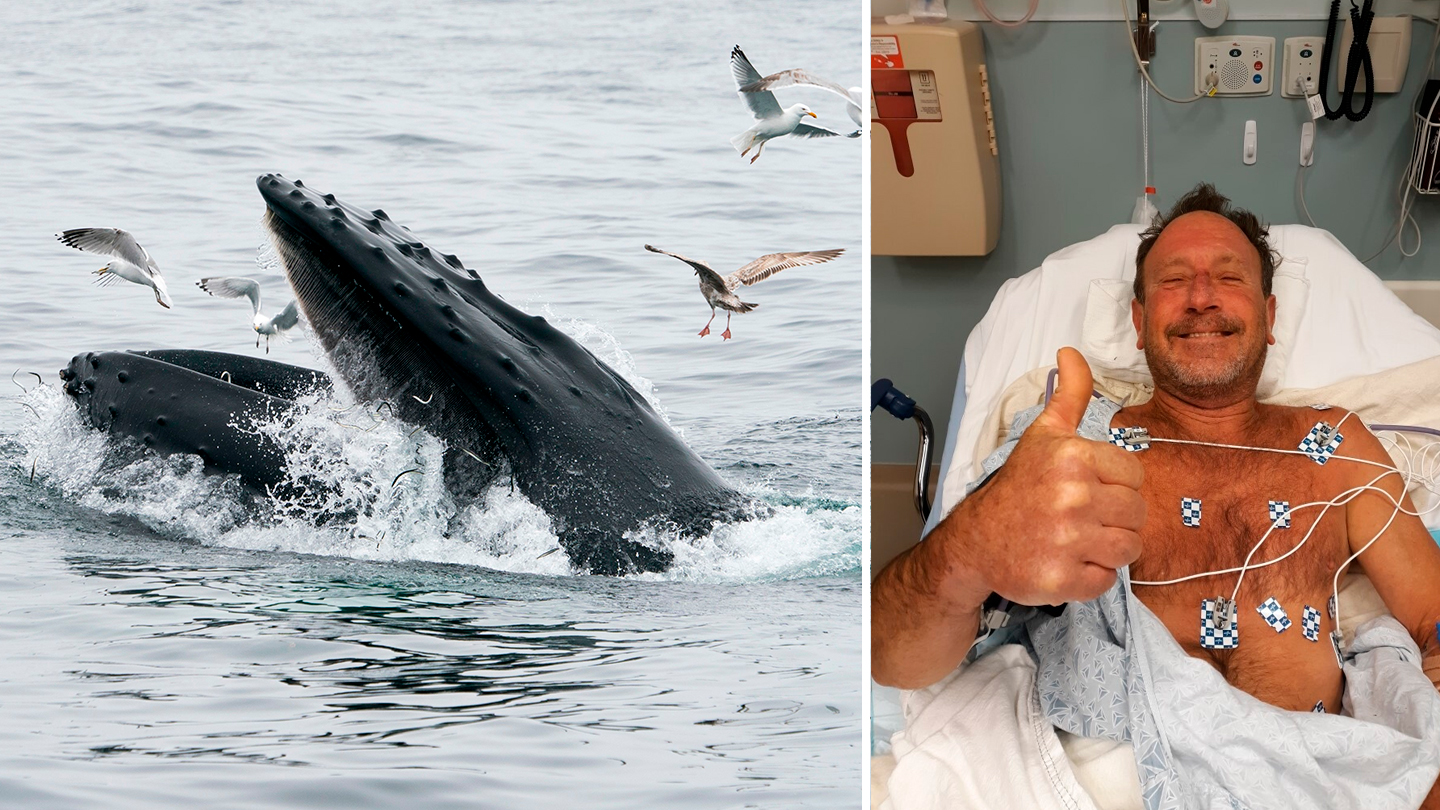It’s a modern day Jonah and the Whale story: A Massachusetts lobster diver was briefly swallowed up by a humpback whale on Friday, and lived to tell the tale.
Michael Packard, a Cape Cod commercial lobster diver was diving off the coast of Provincetown, when he suddenly felt pain as the world around him went dark. He realized he was in the closed mouth of a whale, and thought he was going to die.
WATCH ANYTIME FOR FREE
Stream NBC10 Boston news for free, 24/7, wherever you are. |
The whale spat him out in less than a minute, but Packard has soft tissue damage to his legs and a dislocated knee from the whale encounter.
Get updates on what's happening in Boston to your inbox. Sign up for our News Headlines newsletter.
Experts say encounters similar to Packard’s are rare, and likely a complete accident.
Peter Corkeron, who leads the whale research team at the New England Aquarium, believes that poor visibility in the water may have played a role in Packard’s encounter with the whale.
“You know, the water off the Cape is pretty murky,” said Corkeron. “And you know, when whales are doing these feeds, they’re moving really fast. And this is just an accident and I imagine the whale had this ‘Oh my goodness’ moment and probably got rid of him as quickly as it could.”
More on the Lobster Diver Who Survived Being Swallowed by a Humpback Whale
Similar incidents to Packard’s have happened in the past. In 2019, wildlife photographer Rainer Schimpf was capturing images of a sardine run off the coast of Port Elizabeth in South Africa when a Bryde's whale scooped him up inside its mouth.
“In two seconds, the first thing I realized was someone grabbed me, pushed my hips together, and I could feel the pressure,” Schimpf said. “And instantly knew it was a whale.”
Schimpf recalled the incident happened very quickly and that the whale spat him out.
Experts noted that whales do not eat people, but consume small aquatic lifeforms like fish, squid and krill.
Unlike sharks, whales are known as “gentle giants of the sea.” Sharks are natural predators and often seek out their prey, but humpback whales are known to move their fins and bodies to avoid humans if they are in their direct path.
“They can basically open their mouth through 90 degrees and kind of unlock their jaw and have it drop down,” said Corkeron. “And then they have this giant pouch that fills with water. So from the air, they look like a giant guppy. And then they swallow water and fish, or plankton, then spit out the water, sieve out the prey and swallow that.”
Why do these close encounters occur? Experts said that people sometimes get in the way when whales feed. For example, in 2015, two kayakers were paddling off the coast of Monterey Bay, Calif. -- a popular site for whale watching -- when suddenly a humpback whale breached, nearly killing the kayakers.
But whales do not eat people, whereas sharks often mistake humans for food. Some think that a surfer paddling in the water can look like a turtle to sharks.
Dr. Jooke Robbins, who directs humpback research at the Center for Coastal Studies in Provincetown, said that whales feed by lunging through the water, mouths wide open, to engulf schools of fish and then filter the water through their baleen.
"If something lies directly in the path of a lunge feeding humpback whale, the whale might not always be able to detect it or avoid it in time," he said in a statement Friday. "For example, some entanglements in fishing gear begin this way and can threaten the life of the whale."
Do these kinds of encounters happen in certain areas or times of the year? Corkeron said that, thankfully, they don't.
“In this instance, being what looks like accidentally swallowed by a ... whale, that just never happens,” said Corkeron. “That’s really, really incredibly unusual. I think its the first time I’ve ever heard of it.”
Sign up for our Breaking newsletter to get the most urgent news stories in your inbox.


